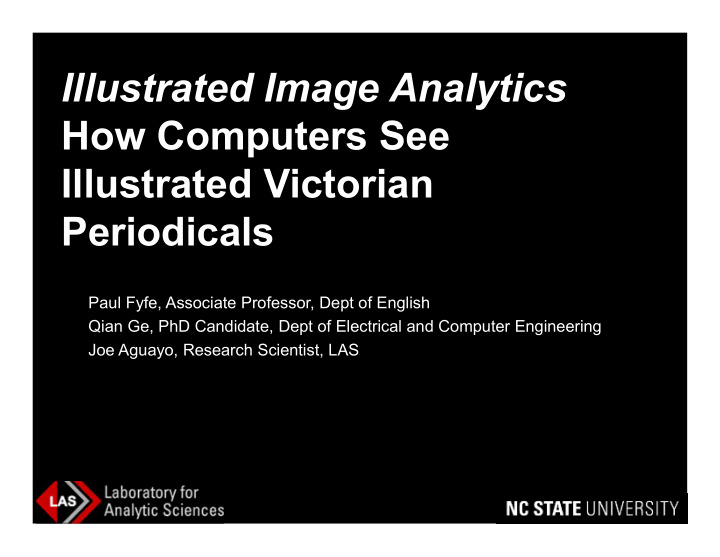



Illustrated Image Analytics How Computers See Illustrated Victorian Periodicals Paul Fyfe, Associate Professor, Dept of English Qian Ge, PhD Candidate, Dept of Electrical and Computer Engineering Joe Aguayo, Research Scientist, LAS
nineteenth-century “big data”
victorian information networks
end-grain woodblock engraving
halftone photoengraving
Mass media did not start with photography. When combined with the scale of nineteenth-century newspaper printing, wood-engraving made possible the mass image. “The new inexpensive printed image thus became the first medium of regular, ongoing, mass communication.” Anderson, Patricia. The Printed Image and the Transformation of Popular Culture, 1790- 1860 . Oxford: Clarendon Press ; Oxford University Press, 1994. 3.
Image processing is an emerging technique • in “digital humanities” research Techniques applied in art history, cultural • heritage orgs, museums, and history Developments in how to visualize and • understand large media collections big data and “cultural analytics” • computer vision and the digital humanities
Materials include thousands of pages from three • titles The Graphic • Illustrated Police News • Penny Illustrated Paper • Methods from ECE and LAS • Research goals • exploratory data analysis • new applications for existing image processing • techniques create workflows and publishable updates for • computer vision algorithms computer vision and the printed image 1830-1900
QIAN
Information science, digital humanities, analytics How to extract images from collections of illustrated newspapers (info • science, DH, libraries) Processes for sorting halftones, lithographs, photographs, and line- • engravings in a large media collection Cultural analytics and history Distant Seeing: Computational Approaches to Victorian Illustrated • Periodicals Detecting Information: The Illustrated Police News at Night (pixel • ratio) The World According to The Graphic (maps) • A Nineteenth-Century Ad Blocker (image sorting) • Graphic Whiteness (halftone portraits) • interpretive possibilities
interpretive challenges
historical data has a history
semantic vs. pixel-level analytics
the “hybrid image”
hybrid analytics
Recommend
More recommend